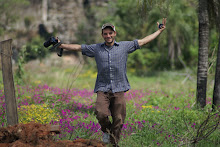

This statement is as practical as it is profound.
Upon graduation from Georgetown University nearly a decade ago, I embarked on my own journey of a thousand miles. Conscious of the fact that my first steps after college would shape my professional and personal life far into the future; I decided to serve as a Peace Corps Volunteer. Having been afforded every opportunity to learn, to live and to love; I was determined to live my life in the service of others.
Ten years, three Peace Corps Services –Paraguay, Guatemala, Panama— and multiple languages later, service remains the focal point of my life’s journey. My most recent personal step however, has forced me to recalculate where in fact, my journey truly began. It wasn’t the Peace Corps or Georgetown University but rather on 87 Halsey Avenue at Saint Cecilia School.
Returning to Panama in early January to give my Peace Corps Community –El Entradero— a surprise visit after a two and a half year absence, I had a homecoming far greater than expected. Upon arrival in El Entradero –a rural, mountainous community of subsistence farming and intermittent running water and electricity, I encountered a group of American college students from George Washington University and Indiana University there through an organization called Global Brigades to perform a series of community service projects.
While working with the students and community members to build water filtration systems and fuel-efficient brick stoves, I learned that one of the George Washington University students, Francis, was not just from New Jersey but actually grew up in Rockaway and attended St. Cecilia School.
I have had my fair share of chance encounters of geographic kith and kin throughout my travels. Never however, as close as my own catholic grammar school. There amid the coffee plantations on a tropical hillside in Panama, 5000 miles from Rockaway, NJ, Francis and I traded stories of St. Cecilia School. Although nine years separates our time at St. Cecilia, we both had the same seventh grade teacher, Ms. Fitzpatrick, and recalled many of the same experiences.
Although the location of our meeting –in a remote jungle village on the Panamanian Isthmus— is extraordinary, upon deeper reflection, the context of our meeting is far more profound. Francis, as I, could have traveled to Panama, and the greater wide world for that matter, in a multiple of other capacities: tourist, backpacker, on a package cruise disengaged from life around us. Instead, we were there, answering, in our own way, the call to service to others.
A student’s time at St. Cecilia School passes quickly. The education earned at St. Cecilia’s however, lasts a lifetime. Meeting Francis in Panama made me realize that it was here at St. Cecilia School where I took my first step in my journey of a thousand miles.









